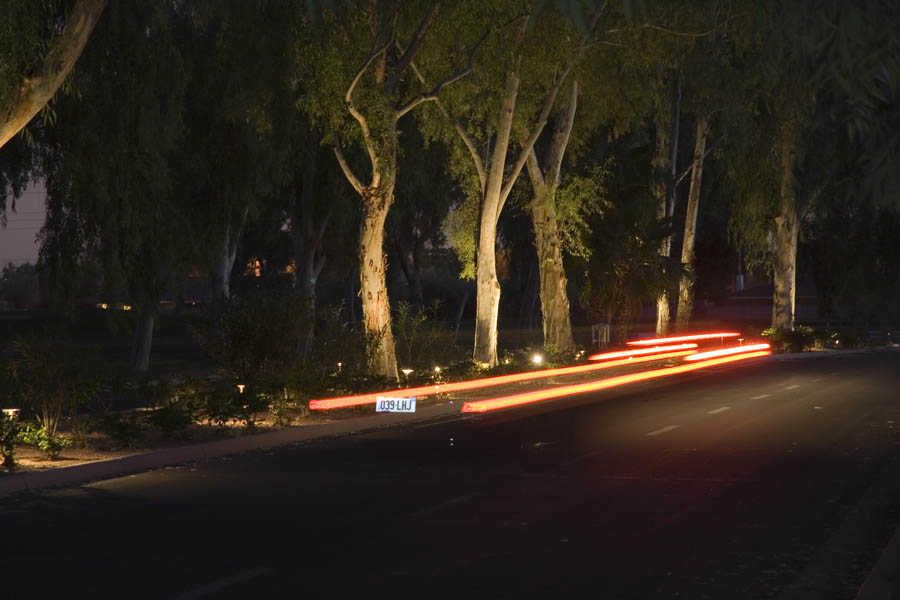I’ve gone back into the archives to retrieve two photos that demonstrate interesting outcomes that can be achieved with long exposures. The first was an unexpected outcome and it took me awhile to realize exactly what had happened.

What you see here is a license plate and the traces of a car’s taillights. But no car! I was photographing this road at night when I saw a car approaching. I thought it would be fun to get the track of its taillights using a long exposure. This is what I got, somewhat to my surprise at the time. Here’s how I explain it. I was using a flash and the short burst of illumination was reflected by the license plate and recorded immediately on the camera’s sensor. The car was dark coloured so it did not reflect the initial flash and was not recorded. The camera’s shutter remained open for 2.5 seconds (determined by the time required to correctly expose the lighted trees and roadway) and the camera’s sensor continued to record an image for that time. The sensor picked up the brightness of the taillights, which appear as a stream because the car is moving. The car itself did not remain in a single place long enough for its darker image to be recorded by the camera. You can see that the traces of the taillights end abruptly when the shutter closed.
This second shot was planned and I did get what I expected. It’s a technique you can use to create a ghost.

That’s me, or an apparition! To take this picture, I locked the shutter open with the camera mounted on a tripod. I assumed a sitting position on the rocks for about 30 seconds and then left. I kept the shutter open for a total of 340 seconds before manually closing it. So here’s what happened. The camera’s sensor recorded me for the 30 seconds I was there. You’ll note that the brighter parts of my image show more strongly because they record more easily than darker tones. There is no record of my departure because it happened too quickly for the camera’s sensor to pick it up in the very low light. After I left, the camera’s sensor continued to record the image, including the area behind where I was sitting, previously obscured by my presence. Those rocks and shrubs are actually recorded over my image, but appear to be showing through me.
These are not what I would call classic photographs, but they show some of the things you can do with a camera. Experimenting with these kind of shots is very instructional and a great way to improve one’s understanding of the workings of a camera.
